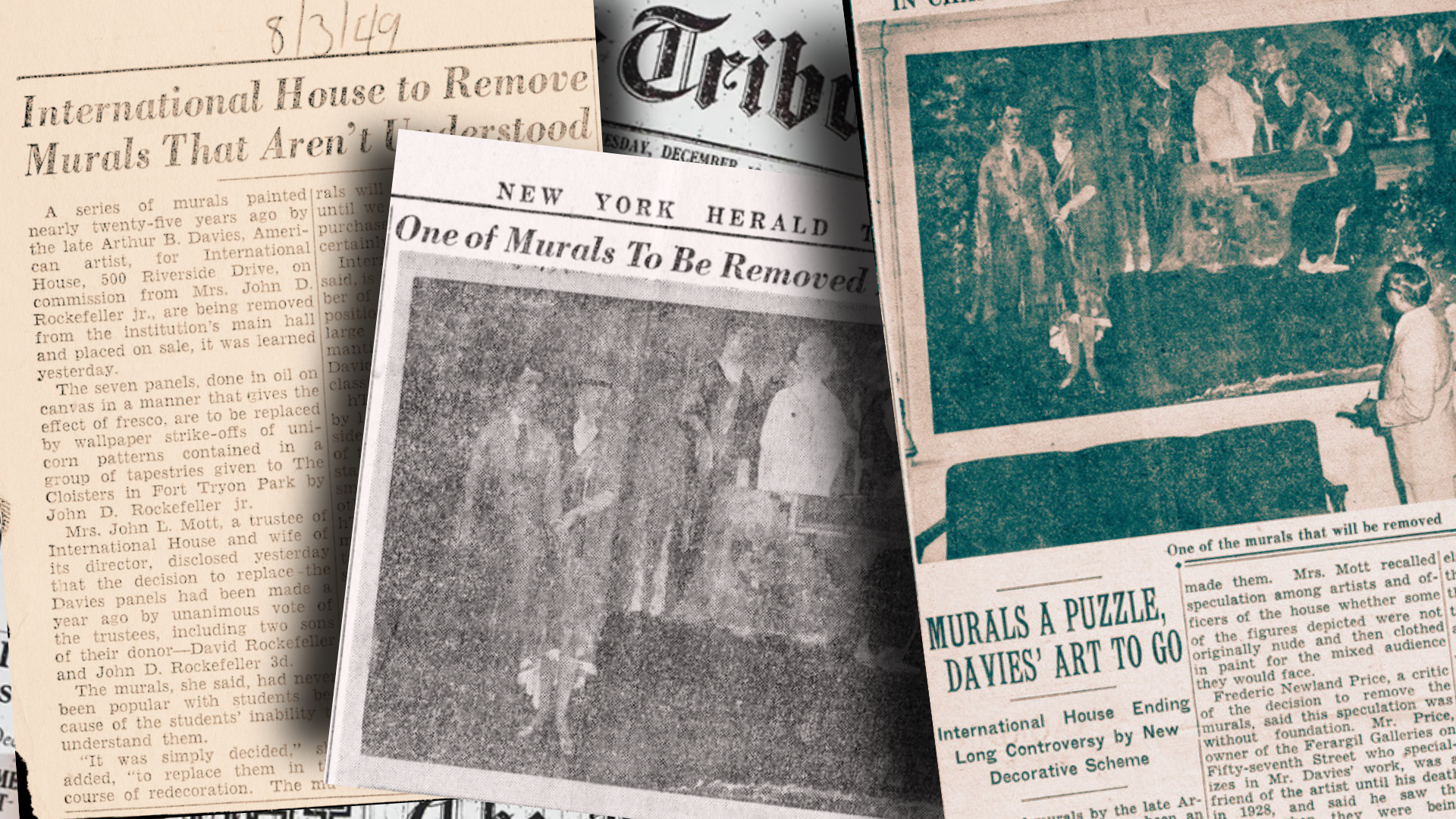
From the Archives: The Lost Murals of the Main Lounge
A few weeks ago, I started a new role as the 2025-26 Archives Fellow at International House. I was sorting through boxes of photographs when one made me pause. I recognized the Main Lounge. It was familiar, yet not. Just above the fireplace, and on either side of the mantelpiece, were murals I had never seen before. I saw that tall, allegorical figures once adorned the walls. Their presence was striking, but their disappearance left me wondering what happened.
That single image allowed me to uncover the story behind the murals that once defined the Main Lounge.
In 1925, American artist Arthur B. Davies, commissioned by Abby Aldrich Rockefeller, wife of John D. Rockefeller Jr., painted seven large panels for the Main Lounge. The canvases, mounted to resemble frescoes, drew from classical mythology. Two of the largest, each 13 by 10 feet, framed the mantelpiece. One showed a woman at a fountain with three small nudes before her, another depicted a group gathered around a table.
Arthur B. Davies was a prominent American modernist painter of the early 20th century. According to the Metropolitan Museum of Art’s Leonard A. Lauder Research Center for Modern Art, Davies was known for his symbolic and often dreamlike figures. He was one of the principal organizers of the 1913 Armory Show, introducing European modernism to the United States. Abby Aldrich Rockefeller, a major patron of modern art and later a co-founder of the Museum of Modern Art, likely chose Davies because his work reflected both classical themes and a modernist vision.
Davies described his artistic perspective as an attempt “to present the unity and identity of all peoples through the Maternal Life source with God.” He hoped to symbolize blessing, perfection, and shared humanity.




The murals, however, were not entirely well-received. By the late 1940s, trustees noted their “unpopularity with the foreign students who make International House their home” (New York Times, Aug. 3, 1949). Speculation circulated: some believed the figures had once been nude, later clothed in paint to make them acceptable to residents. Others felt the works were simply too abstract, too difficult to connect within a space meant for gathering and conversation.
In the early 1950s, the trustees voted unanimously to remove the murals. The Lounge walls were repainted a deep bluish-green and eventually adorned with reproductions of the Unicorn Tapestries from the Cloisters. What became of the murals themselves is unclear. An archival note from 1987 mentions they were “supposedly sent to Utica,” but no clear record survives. Their whereabouts remain unknown.
Sitting in the Main Lounge today, it is easy to forget that the space once held such large and contested artworks. For me, the story of the murals is less about their disappearance than the questions they leave behind. What did it mean for the earliest I-House residents to bear witness to these murals? And what does it mean for art created to symbolize “unity” to be considered “distant” in a home built for a global community?
Though the murals are gone, their memory endures through photographs in our Archives, reminding us that the walls of I-House hold stories beyond what we can see today.
Avantika Seth is the Archives Fellow at International House and a master’s student in Oral History at Columbia University. Her work explores questions of identity, memory, and silence through oral histories and ethnic studies frameworks.